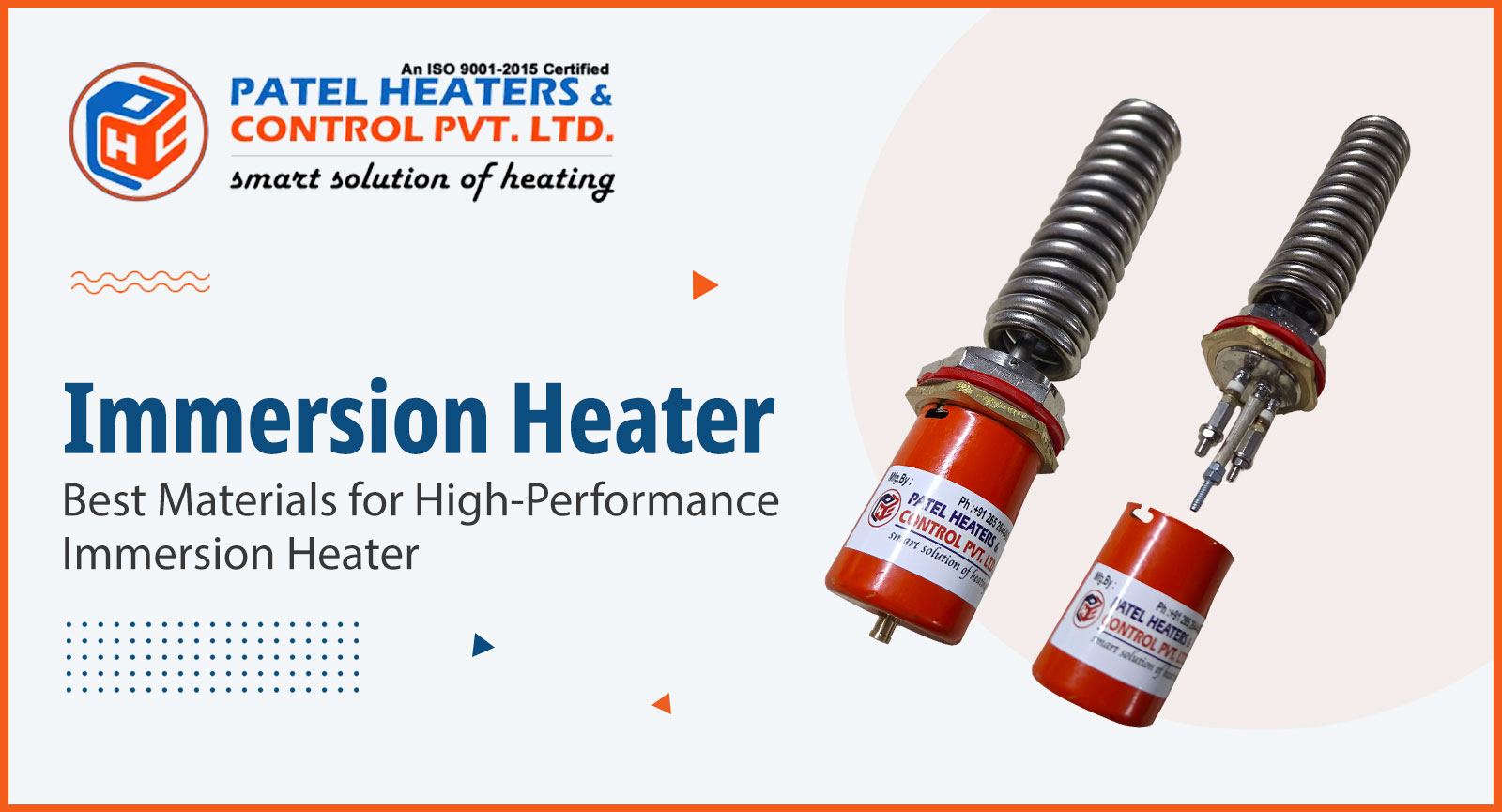Best Materials for High-Performance Immersion Heater
Immersion heaters are heating equipment that uses electricity to heat the water in a storage tank. These heating elements ensure a consistent supply of hot water to users. Although these water heaters are not as common as combi boilers nowadays, they may be useful for folks who have an ancient boiler or a faulty gas network. In this blog, you will learn the working process of an immersion heater and its applications.
Immersion Heater Working
A domestic immersion water heater is an electrical appliance that heats pre-filled water tanks. A heating element is immersed in the water, and a powerful electric current flows through it. It turns electric current into heat. The heat is then dissipated through the surrounding media which is often a specific fluid in a sealed container or a tank. Now, the heated fluid delivers thermal energy to the water and increases its temperature.
A gas-heated water tank has a hob below that helps to heat the water. In contrast, an immersion heater warms the water immediately inside it. Compare it to your standard kitchen kettle but on a bigger and slightly more sophisticated scale. The tank contains a thermostat, which helps to keep the water at a specified temperature. You get heated water out of the tank when the influx of cold water from beneath the bottom of the reservoir pushes the hot water.
Which Material Is Used to Make an Immersion Heater?
The heating element of a water immersion heater is enclosed in a protective sheath consisting of copper, stainless steel, titanium, or Incoloy. The sheath separates the heating element from the fluid, preventing it from coming into direct contact with it.
Stainless steel is a temperature-resistant material. So, this material is used to make an immersion water heater. It works well when the heater comes into contact with water and chemicals.
Copper is another material used to make immersion heaters. Its higher thermal conductivity allows for faster heating. Copper has worse corrosion resistance than stainless steel.
Titanium is lightweight and corrosion-resistant. Titanium immersion water heaters are used in marine, chemical processing, and other sectors. Also, titanium heaters are affordable and perform well in different sectors.
Here Are Some Water Immersion Heater Uses
Immersion water heaters are popular heating elements because of their low cost and high efficiency. This heating equipment is used for frost protection in agriculture and water treatment and for obtaining the proper viscosity for oils and wax. Some of the most prevalent immersion heater uses are given below.
Used for Heating Water:
Protecting against extreme temperatures can be difficult, especially during the cold winter months. Workers use immersion water heaters to keep water circulating in procedures that require it, ensuring that their project remains operational. Immersion heaters also provide options for water treatment and sanitation. Circulation heaters are the ideal option for heated water flow. These heaters are widely utilized in wastewater management. For these applications, Processing Magazine suggests screw plug or flanged immersion heaters.
Used For Heating Viscous Fluids
Viscous liquids can be difficult to maintain. Colder temperatures cause increased viscosity in goods like oil, wax, and petrol. This results in slower-moving materials. Immersion water heaters can help you attain and maintain your optimal viscosity level.
Heating of Hazardous Chemicals
Immersion water heaters are essential for controlling the temperature of gases and other dangerous compounds.
What are the different types of immersion heaters?
Immersion water heaters are available in a variety of designs to meet a wide range of heating demands and requirements for various water reservoirs.
Screw Plug or Threaded Immersion Heaters
A screw plug or threaded heater is intended to be put into a tank or vessel via a threaded aperture. The heater is made up of a heating element covered in a protective sheath, with a threaded fitting on one end that can be screwed into the tank or vessel.
These heaters may be tailored to individual application requirements, including thermostats and other temperature controls. They may be customized in terms of length, wattage, and voltage to meet the heating needs of the tank or vessel.
Over-the-side immersion heaters.
An over-the-side immersion water heater is intended to be mounted on the side of a tank or through the top of the vessel without the need for a threaded aperture. The heater’s main body hangs over the tank’s side, while the heating element is submerged under fluid.
Overall, they are an excellent choice for heating water in vessels that cannot accommodate submersible heaters. For your reference, the remaining characteristics are comparable to the threaded heater; these may be modified in various lengths, wattages, and voltages to meet the tank or vessel heating needs.
Patel Heaters
Patel Heaters and Control has immense expertise in the manufacturing of Industrial heaters and heating elements. We have been providing heating solutions to our clients since 1982.






